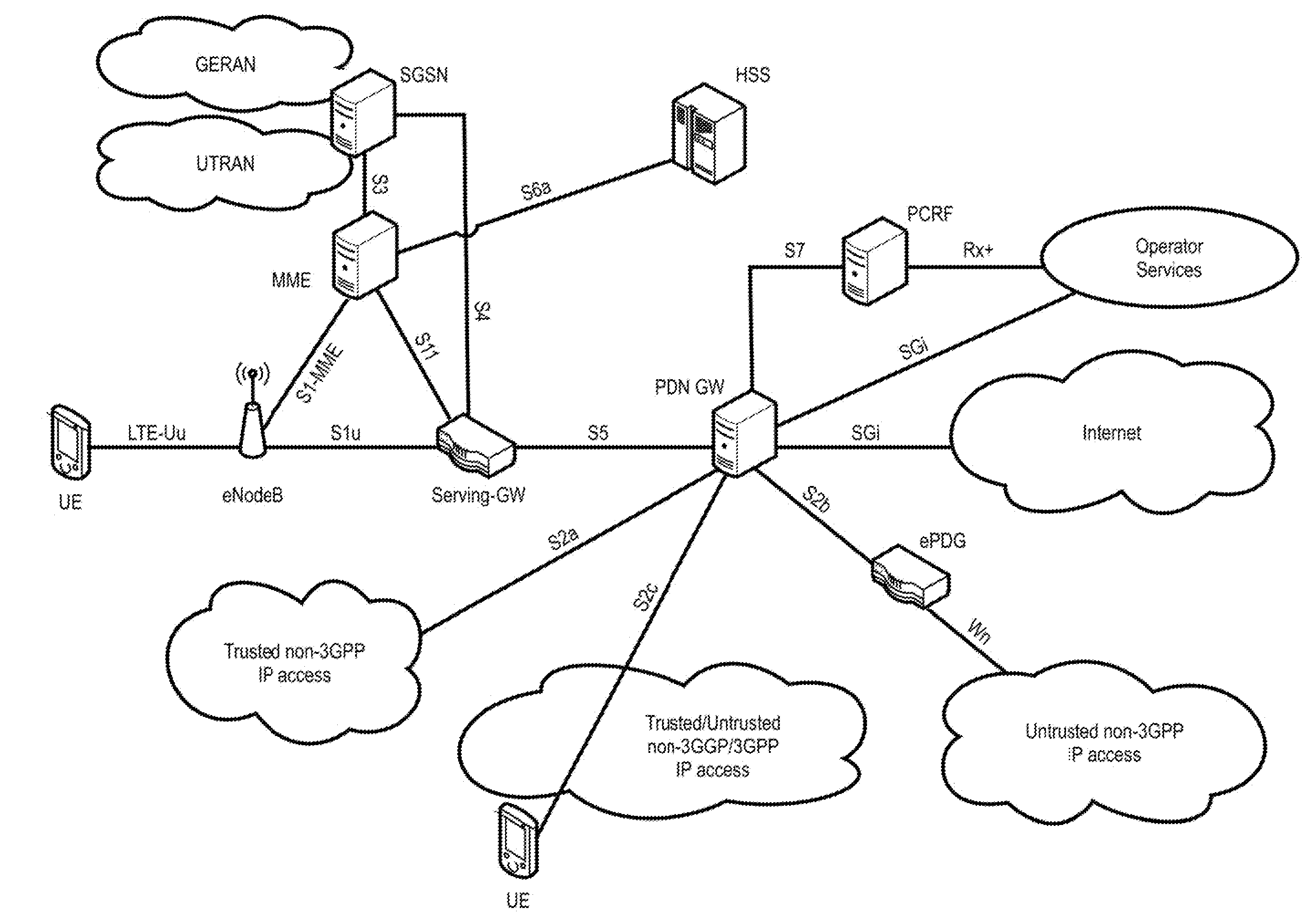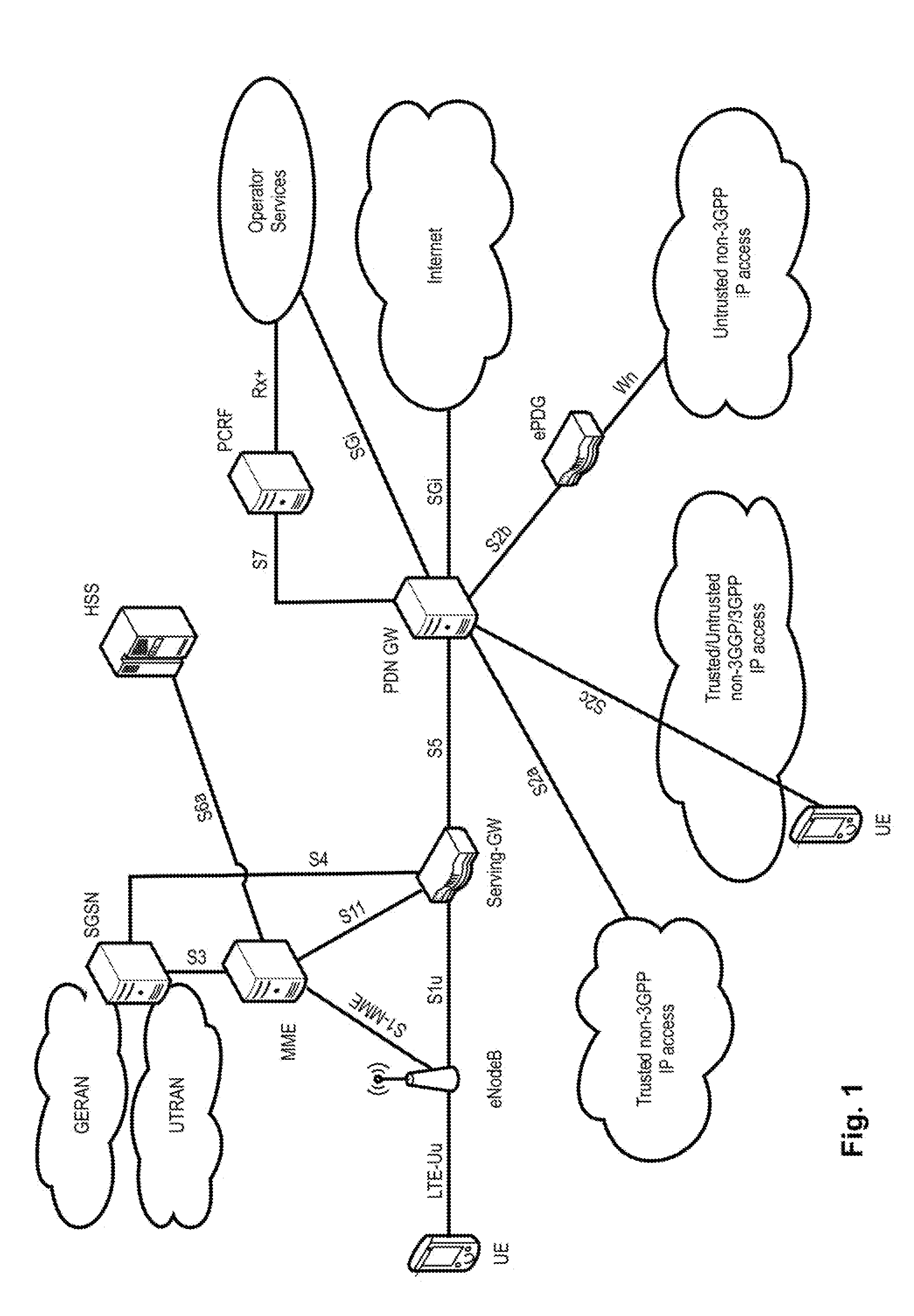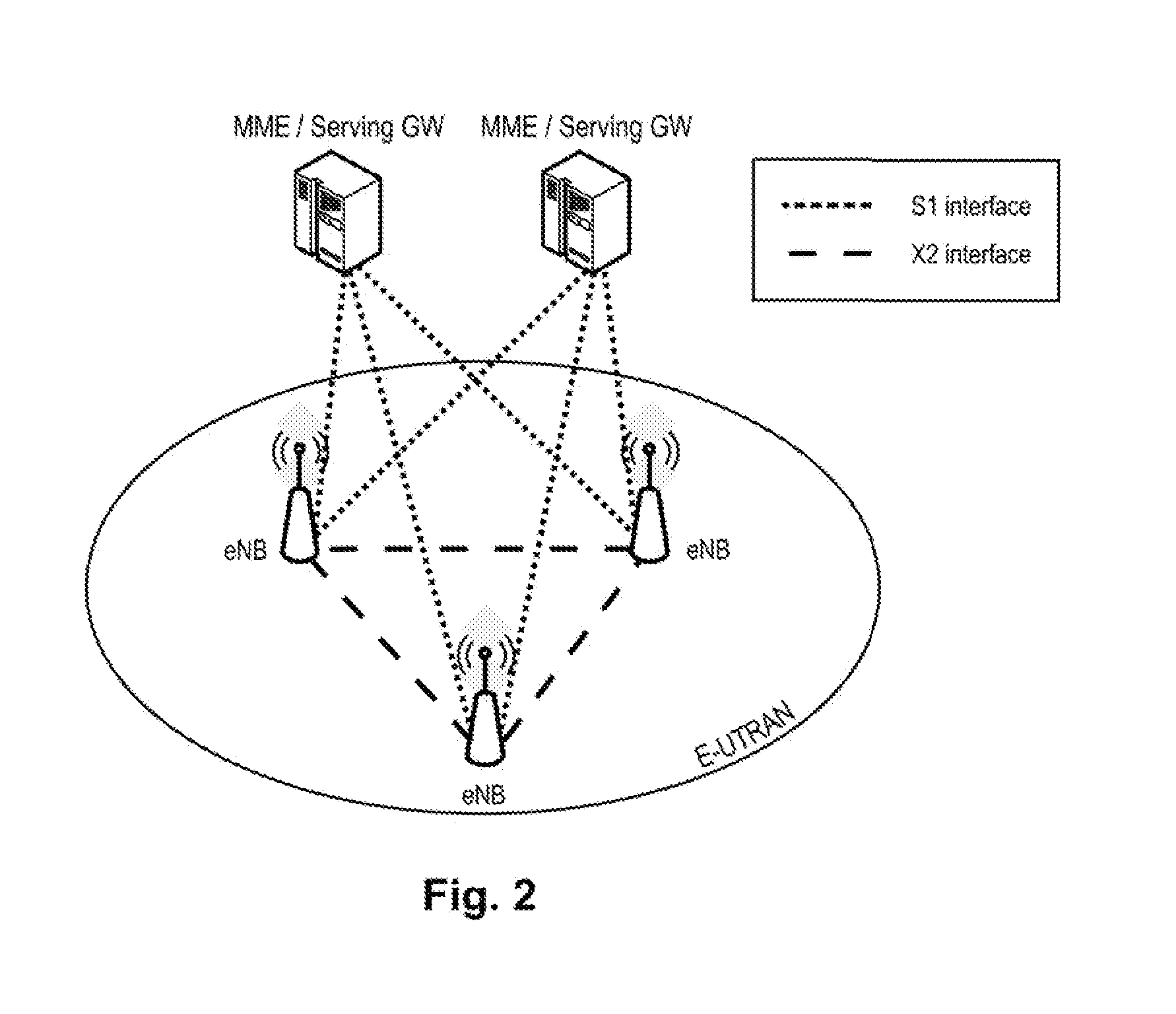Dynamic TDD uplink/downlink configuration using dci
a technology of dynamic tdd uplink/downlink and configuration, applied in multiplex communication, power management, and assessing restriction, etc., can solve problems such as wrong measurement and channel estimation
- Summary
- Abstract
- Description
- Claims
- Application Information
AI Technical Summary
Benefits of technology
Problems solved by technology
Method used
Image
Examples
first embodiment
[0149]According to a first set of embodiments of the invention, the TDD configuration is encoded into the CRC of a DCI, both transmitted (usually broadcast) from the base station for a particular radio cell.
[0150]To said end, seven different RNTIs are defined, e.g. at the base station or another network entity, each of the seven different RNTIs being associated with one of the seven TDD configurations, such that every TDD configuration 0-6 is associated with one different RNTI. FIG. 8 illustrates a possible association, where TDD—0-6_RNTIs are associated with the TDD configurations. The RNTI cost is thus strictly limited by the number of TDD configurations, and for instance not related to the number of small cells in the eLA scenario (see later, second embodiment). The TDD RNTIs are preferably 16-24 bit long and can be freely selected, but are preferably chosen from the range FFEO-FFFC in hexadecimal notation for the 16-bit case, and can be specified in a similar fashion as currentl...
second embodiment
[0186]The second embodiment of the invention mainly differs from the first embodiment explained above in that the TDD UL / DL configuration is not encoded into the RNTI used for scrambling the CRC of the DCI, but instead a TDD UL / DL configuration indication is included into the DCI payload. Most of the remaining details however remain the same between the first and second embodiments.
[0187]The TDD UL / DL configuration indication in the DCI distinguishes between the 7 different TDD UL / DL configurations of FIG. 6; thus, a 3-bit field suffices to indicate the particular TDD UL / DL configurations, where each indication value is associated with one of the TDD configurations. Again, it is also possible to distinguish between less TDD UL / DL configurations, such that already a 2-bit (or even a 1-bit) field suffices; however, with the disadvantage that the dynamic TDD re-configuration is not so flexible.
[0188]The association between the 3-bit values and the TDD configurations can be defined by t...
third embodiment
[0207]The third embodiment of the invention is similar to the first and second embodiment in that it deals with dynamic TDD UL / DL re-configuration using the transmission of a DCI / CRC. Further, similar to the second embodiment, the TDD UL / DL configuration is not implicitly encoded into the RNTI, used for scrambling the CRC, but instead is included in the DCI payload. However, according to the third embodiment a target cell identifier (SC-RNTI) is not used for scrambling the CRC of the DCI. However, the DCI includes an invalid parameter to indicate to the mobile station that the DCI further includes an indication as to a TDD configuration. In other words, the invalid parameter already discussed in connection with the first and second embodiments as being an optional parameter of the DCI, is for the third embodiment always included in the DCI payload.
[0208]Otherwise, many details already discussed for the first and second embodiments remain the same for the third embodiment. For said r...
PUM
 Login to View More
Login to View More Abstract
Description
Claims
Application Information
 Login to View More
Login to View More - R&D
- Intellectual Property
- Life Sciences
- Materials
- Tech Scout
- Unparalleled Data Quality
- Higher Quality Content
- 60% Fewer Hallucinations
Browse by: Latest US Patents, China's latest patents, Technical Efficacy Thesaurus, Application Domain, Technology Topic, Popular Technical Reports.
© 2025 PatSnap. All rights reserved.Legal|Privacy policy|Modern Slavery Act Transparency Statement|Sitemap|About US| Contact US: help@patsnap.com



